Metaheuristics: A Narrative of Discovery
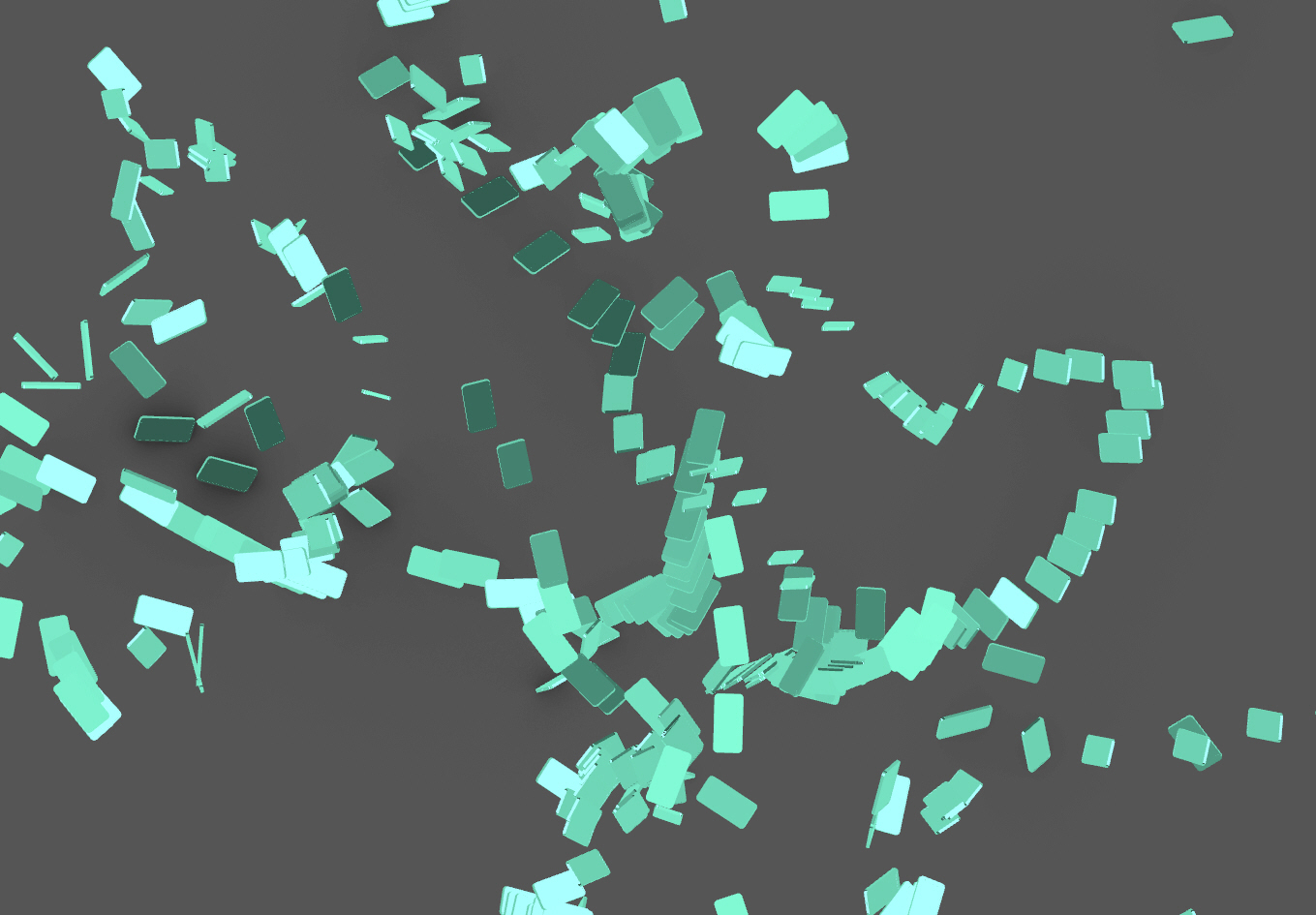
Waèl el Allouche, Metaheuristics: A Narrative of Discovery, 2022, recording of phone movements during dance workshop.
According to the story and legend, the Persian physician, philosopher, and alchemist Abū Bakr al-Rāzī was tasked with finding the best location to build a new hospital in Baghdad, but he was unsure of where to place it. To make his decision, he hung pieces of fresh meat at various locations throughout the city and monitored their decay rates. He ultimately chose the location where the meat decomposed at the slowest rate, as he believed it to be the most hygienic and healthy environment for the hospital.
Knowledge is a space. Artificial intelligence (AI), machine learning (ML), and neural networks (NN) are methods of processing and analyzing data in a digital space. Data points from the real world are scaled to fit within this digital space, which is presented as a cluster of possible relations. AI, ML, and NN have a way of finding connections within a dataset to offer a solution or answers, or multiple solutions. However, there is a potential for bias to arise from the way that the data is trained to recognize certain patterns. It may also only recognize what it interprets as it is, but not necessarily predict unknown behavior.
The contemporary experience of the real world is increasingly mediated or externalized, raising questions about whether the quality and complexity of a space is also being mediated. Aspects of serendipity can arrive within a walk, discoveries can be made that one couldn't have imagined to be real. This externalization of the real through mediation should be understood to undo oneself from this technological alienation. This process should be done as an act of detournement, using the same mechanism but with the world around someone and themself in it. The question here is how to regain power over and own one’s representation and to understand its complexity.
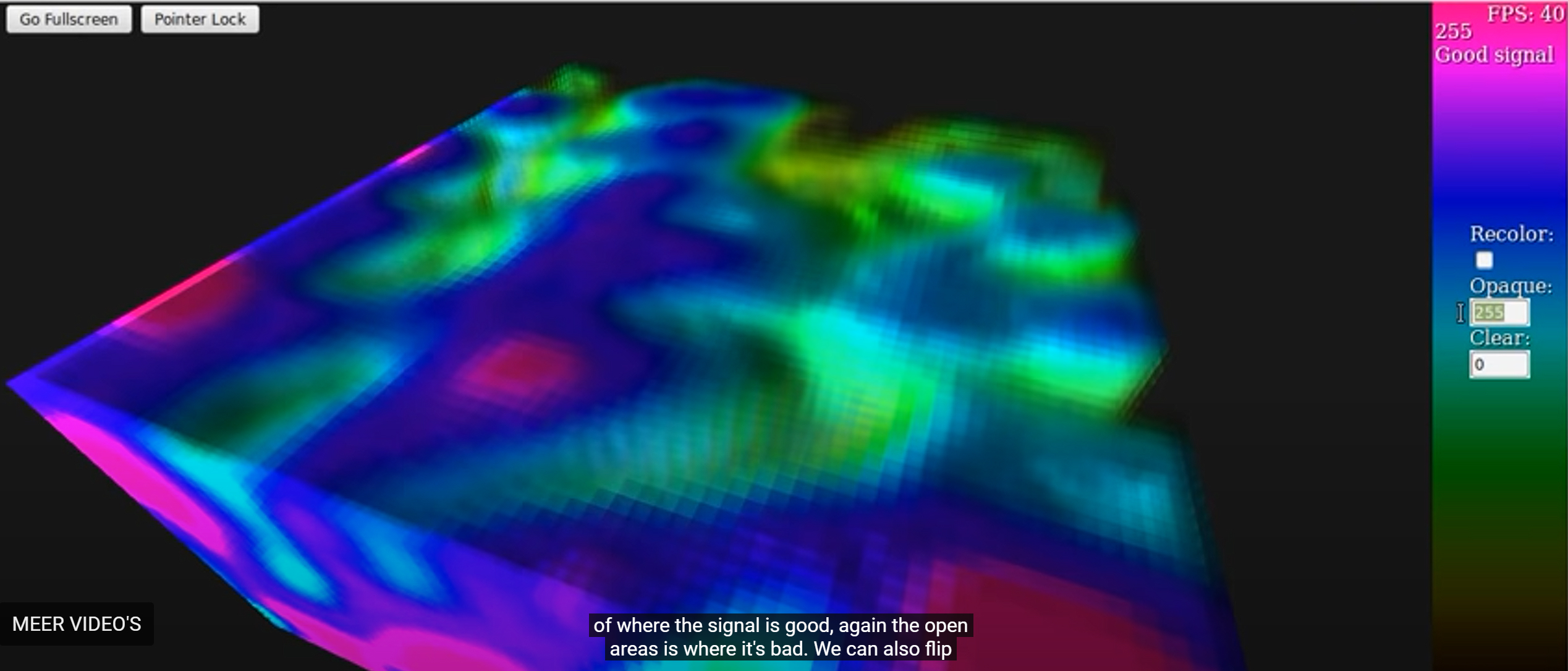
CNLohr, High Res WIFI Signal Mapping, 2015, screen-capture from YouTube. This video shows how to visualize WIFI signal as a spatial map.
The Fishbowl as a Vehicle
During my research for this fellowship, I came across a YouTube video from the channel “2 Minutes Paper,” which discusses the latest papers on AI and computation. AI is advancing in an unprecedented way. To gain a better understanding of movement and navigation and how technology influences people, I looked for an example. I found the video “Can A Goldfish Drive a Car? Yes! But How?”1 It seems absurd to see a fish navigate toward a designated goal, similar to how a human being follows Google Maps to reach their destination. Is a fish able to learn or is it simply luck that it reaches the red dot on the other side of the wall? When someone holds a smartphone, what drives them forward? Is it a journey or just an algorithm guiding someone toward the shortest route, using their phone as a compass?
Is there a similarity between the Sufi and Situationist traditions? The concept of Suluk, or the spiritual path, is also central to Sufi philosophy and emphasizes the idea that the journey toward spiritual realization and union with the divine is not a passive process, but an active and dynamic one that requires dedication and effort. The Sufi is encouraged to cultivate certain spiritual qualities, such as humility, compassion, and detachment, and to overcome various obstacles and challenges along the way. The Situationist act of dérive (meaning “drift” or “wandering”) involves purposefully wandering through urban environments with the goal of experiencing the city in a new and unmediated way. The Situationists believed that by engaging in these aimless wanderings, individuals could break free from the constraints of modern society and connect with the authentic aspects of their environment and themselves.
Sufi and Situationist or is it the Same?
The Sufi voyage, known as Suluk, and the Situationist concept of dérive may appear distinct, but they share a common intention of breaking away from conventional paths and goals. Rather than adhering to a simple, algorithmic quest, they seek to expand their understanding of the world. Could Google Maps-guided navigation ever be called a quest? I argue no.
The shortest-path algorithm, also known as the Dijkstra algorithm, named after the Dutch computer scientist Edsger W. Dijkstra, is used to find the shortest distance between a given node and all other nodes within a graph. To understand this concept, think of a city as a network of nodes, each connected by graphs and lines with individual weights such as distance, time, and traffic. The algorithm’s goal is to minimize these weights to reach the end goal, creating the shortest path. This optimization is based on efficiency and productivity.
Although this algorithm is simple, it's widely used within navigation systems. However, it doesn't aim for discovery, as its criterion is to find the lightest and fastest road. Dijkstra’s algorithm isn’t an AI, but it’s a useful starting point to understand its engineering and narrative. The algorithm's way of seeking an answer is a form of metaheuristics, which is a guide for search strategies. It’s interesting to consider what other metaheuristics lie behind more complex algorithms, particularly in AI.
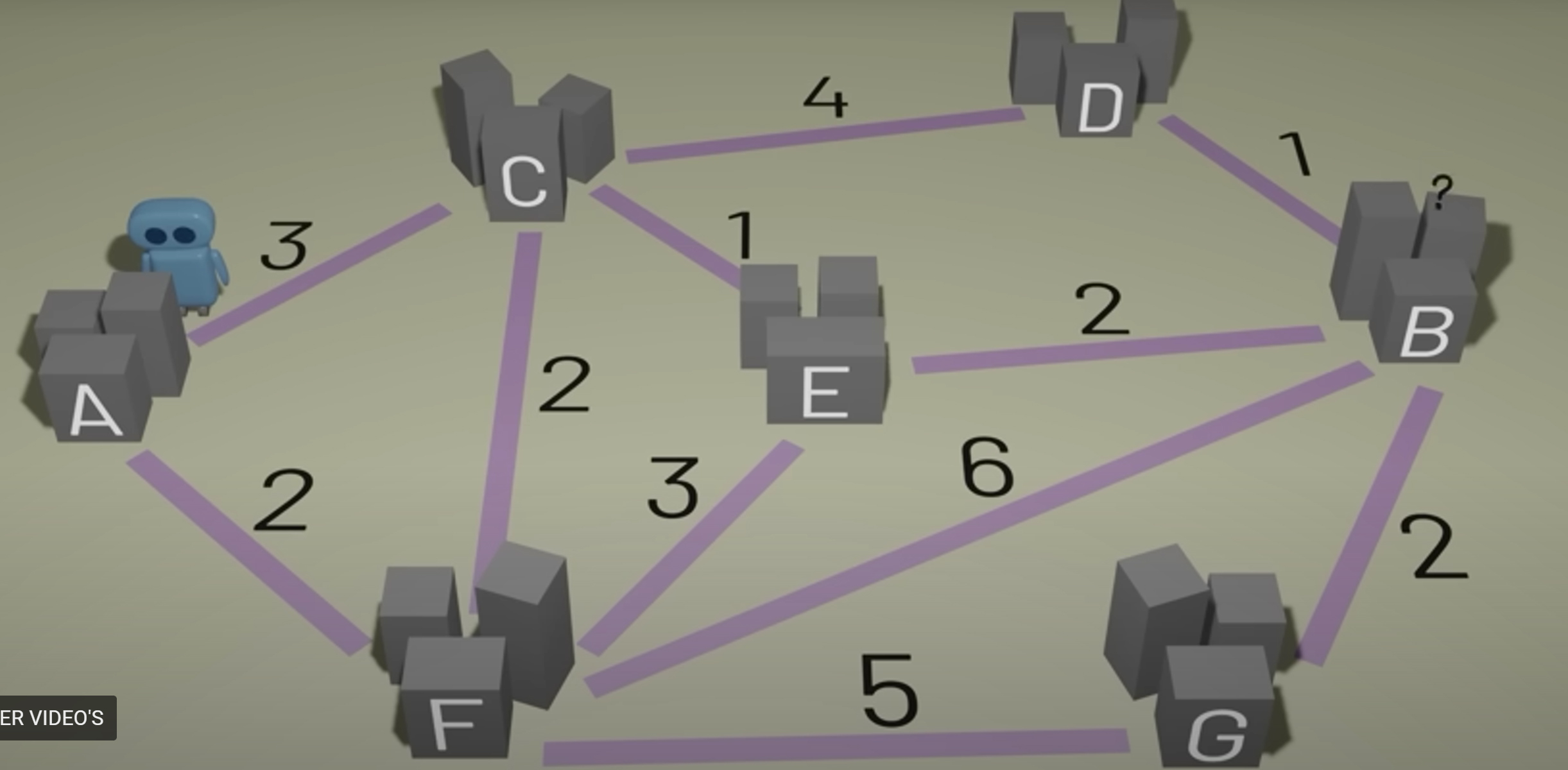
Spanning Tree, How Dijkstra’s Algorithm Works, 2020, screen-capture from YouTube.
The Shortest Path or a Path with Local Infinities?
The terms Suluk and dérive are not typically found in the programming language or within smartphones, limiting people’s ability to explore other layers and dimensions of their daily lives beyond simple factors like time, distance, and traffic density. This simplicity of the Dijkstra algorithm leaves out the complexities of navigation and exploring space that could be represented as a different metaheuristic.
The Situationists and their political, activist stance provide inspiration for considering every place as a universe in itself, with each corner of the street allowing a different model to emerge. This idea goes beyond simply providing a different perspective but allows people to know their environment differently, providing a different heuristic for defining a path to one's destination. Meanwhile, the Sufi tradition offers a way to become aware of dimensions not commonly encountered within western contexts.
I sought to increase and explore the dialogue between western and non-western notions of navigation, particularly focusing on Islamic Sufi concepts. This exploration began with the Situationist documentary Viktigt viktigare viktigas (1972) by director Eric M. Nilsson which followed Swedish development agencies in Tunisia and highlighted the differences in navigation and sense of time and space between western and non-western perspectives. While the documentary suggested a cyclical, regenerative way of navigating in non-western contexts, Sufi mysticism offers the concept of “local infinity,” wherein every finite being contains a spark of the divine infinite, known as “the infinite within the finite.” Harnessing this local infinity requires starting from the actual world rather than a virtual one, and using smartphones as sensors to materialize the voyage through digital self-externalization, using the data produced within our smartphones.
Being inspired by the situationists and their activist stance, it would have been a magical thing to be able to measure and show that every place is a different place—that every corner of the street is a universe in itself, like a world within a sand grain. Every single meter could allow for a different model to emerge; one could create a sense of infinity within one's place and position. This approach would allow a different understanding of the environment and potentially create a different heuristic for defining a path to one’s destination. Could the Sufi tradition be a way to bring awareness to other dimensions one is not familiar with within western contexts?
The Voyage
I want to embark on a journey and avoid a straightforward trip that only aims to reach its destination in the shortest possible time. Instead, I want to discover the complexities that arise during this voyage, using the phone as a sensor to reveal its local infinities. With at least nine sensors, my phone offers various perspectives to view the surrounding world. Armed with the Randonautica app that generates a random destination point, I won’t rely on Google Maps to determine my path. The path and its potential discoveries are left undefined, allowing me to guide my own exploration. This process of embodied navigation can occur without any fixed nodes or graphs to guide me, creating an endless array of nodes and routes to reach my destination. I document and repeat this process to showcase the infinite paths and micro-gestures that fill this journey.
Read further about the journey I took during my fellowship here: https://docs.google.com/presentation/d/1gcFb37GkM-hY3HAdGa-Gm-RpyxILANatr3eltnR5VOw/edit?usp=sharing
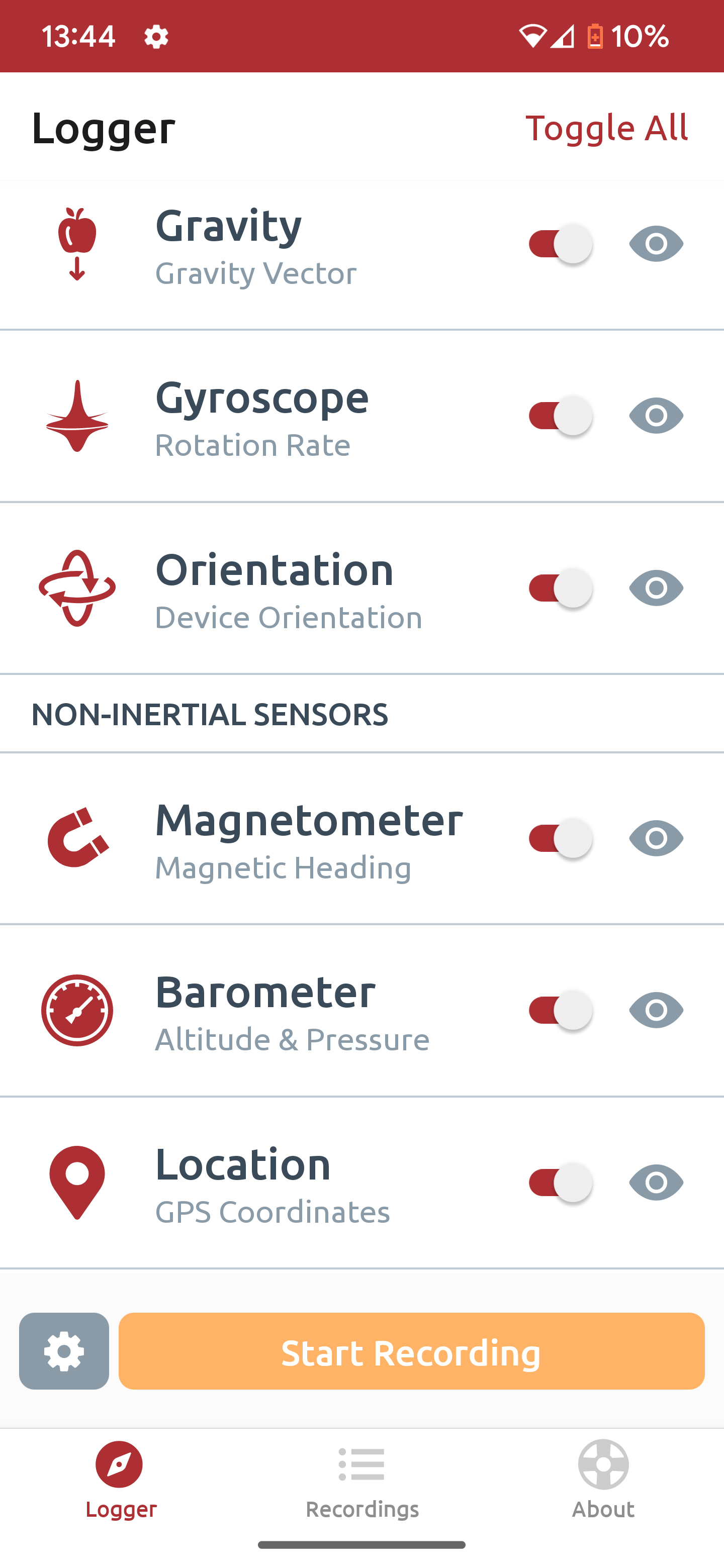
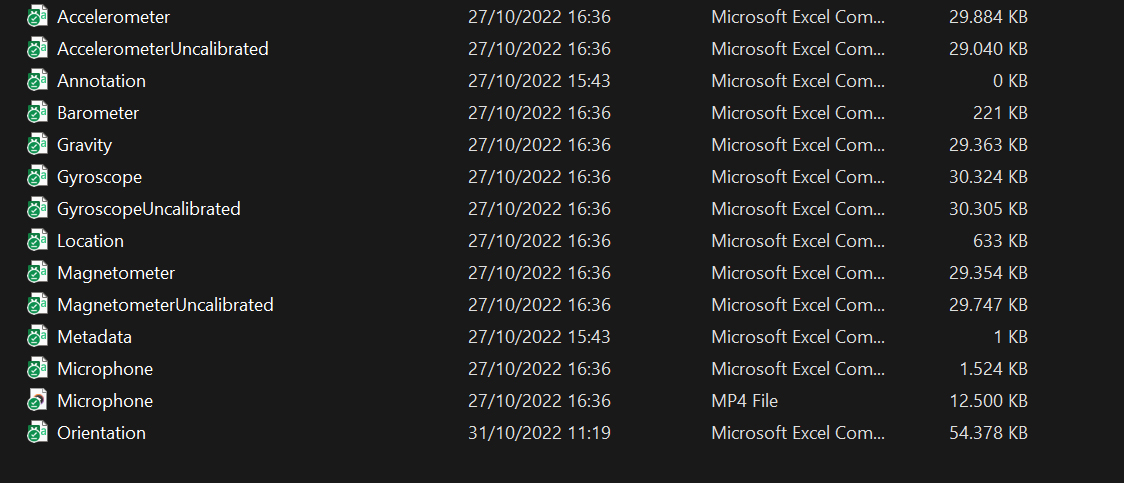
Waèl el Allouche, Metaheuristics: A Narrative of Discovery, 2022, screen-capture of the app used to record the GPS and other phone data with their relative file sizes.
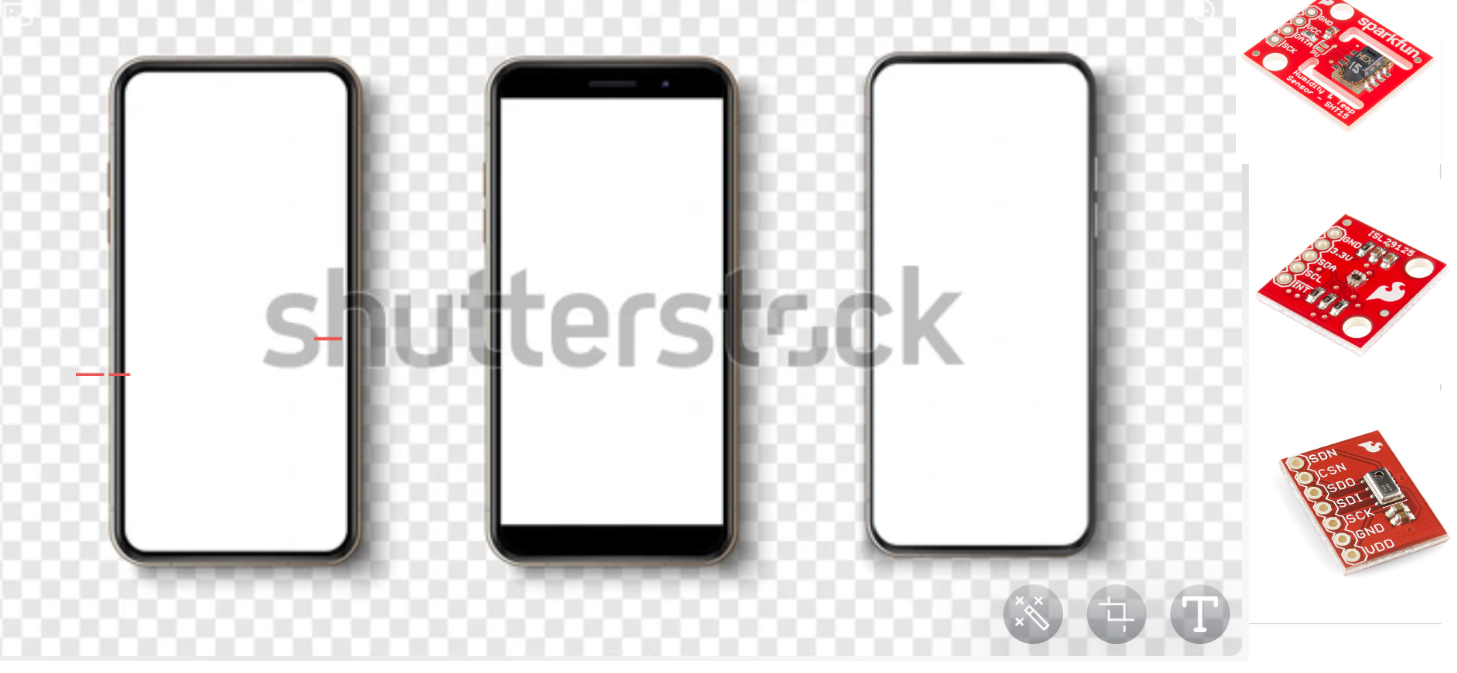
Waèl el Allouche, Metaheuristics: A Narrative of Discovery, 2022, a collage of a deconstructed phone showing all the sensors inside of it.
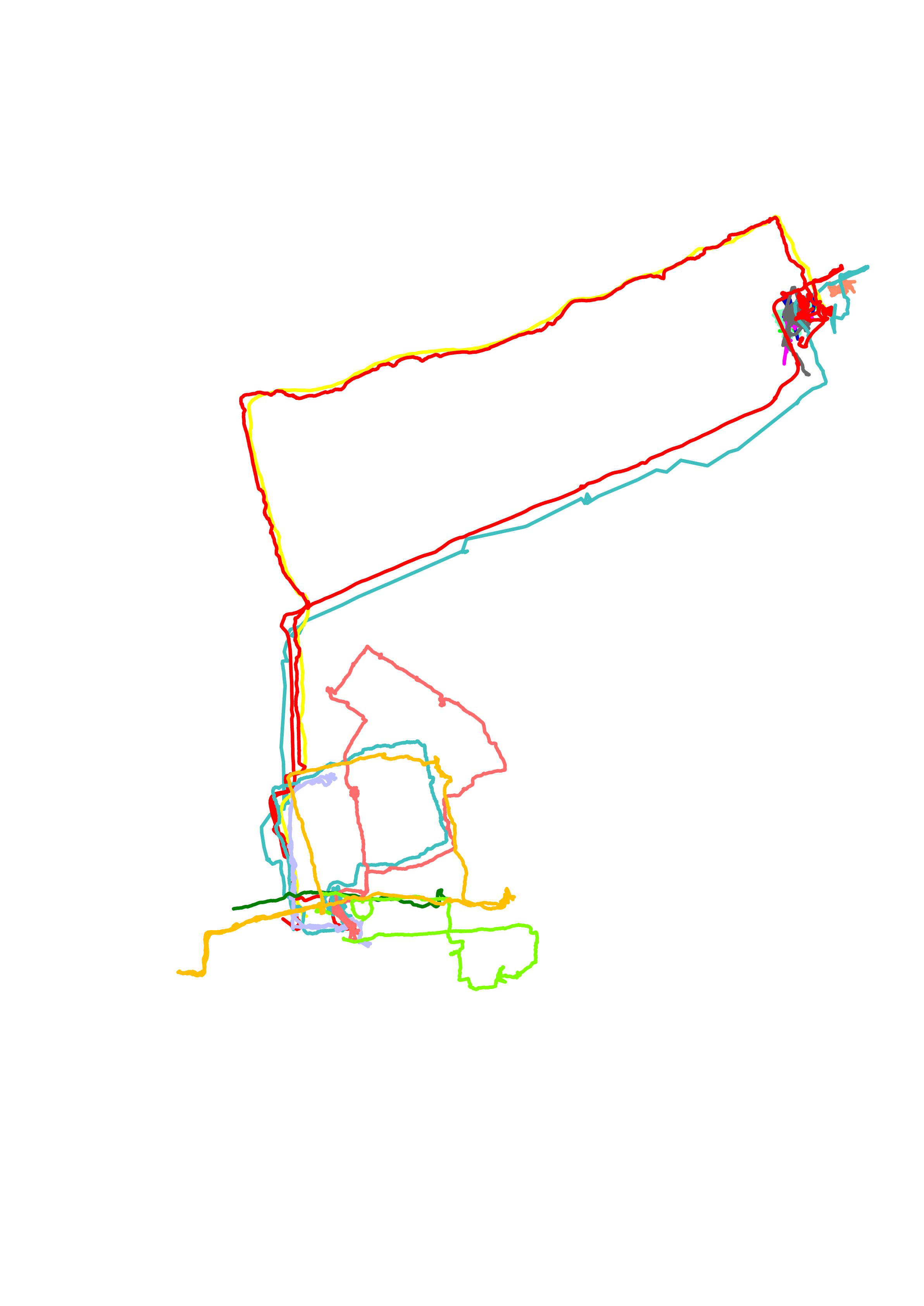
Waèl el Allouche, Metaheuristics: A Narrative of Discovery, 2022, GPS recordings of walks to unknown destinations in Amsterdam.
1Two Minute Papers, “Can A Goldfish Drive a Car? Yes! But How?” https://youtu.be/WAuaCBmHa3U.